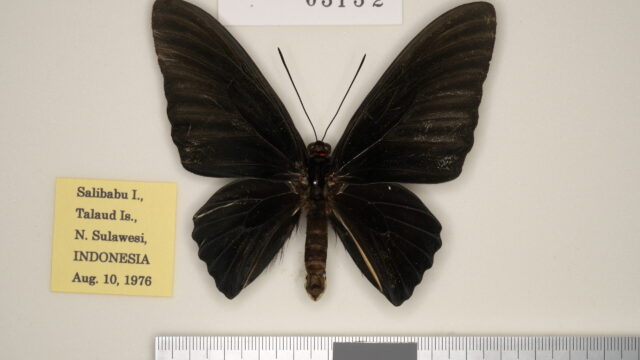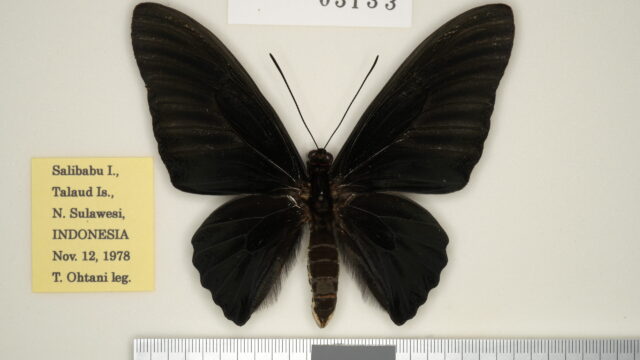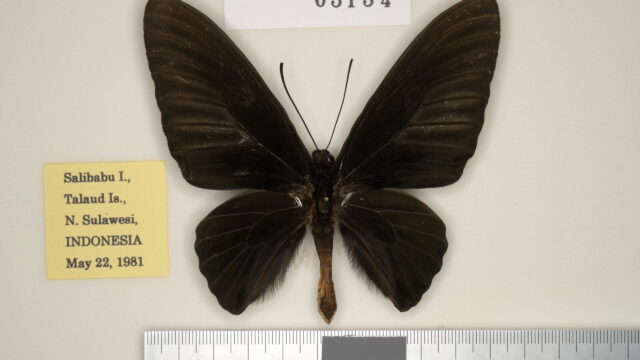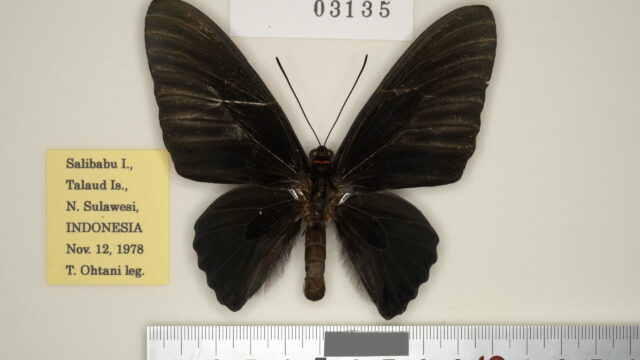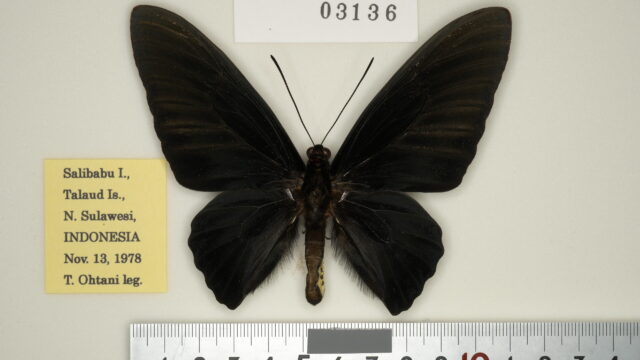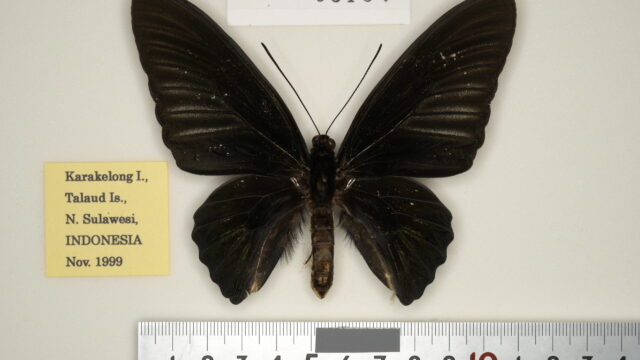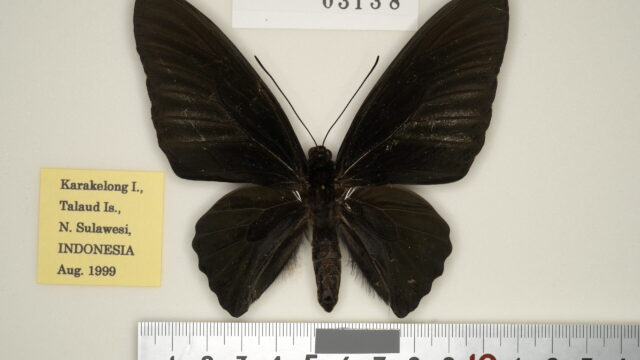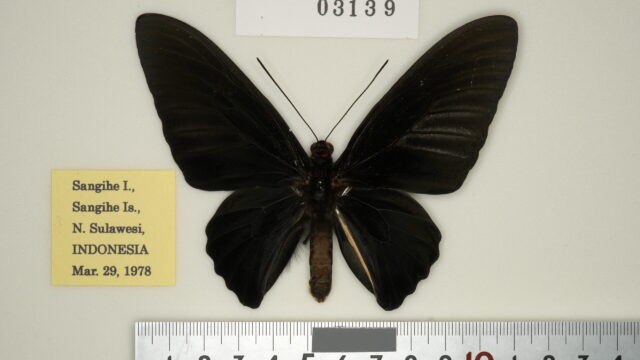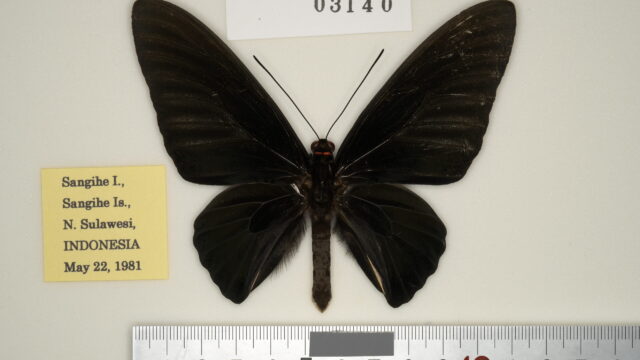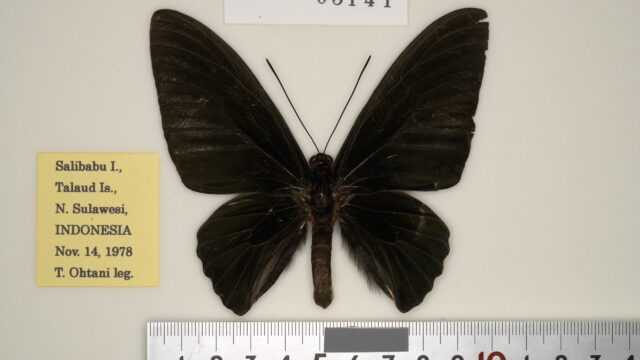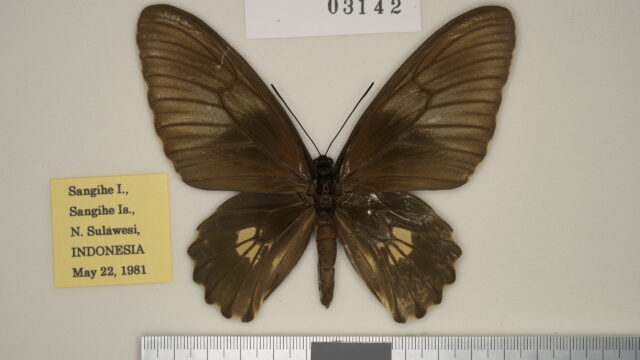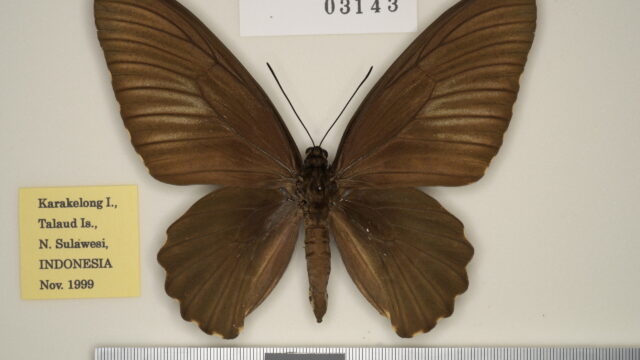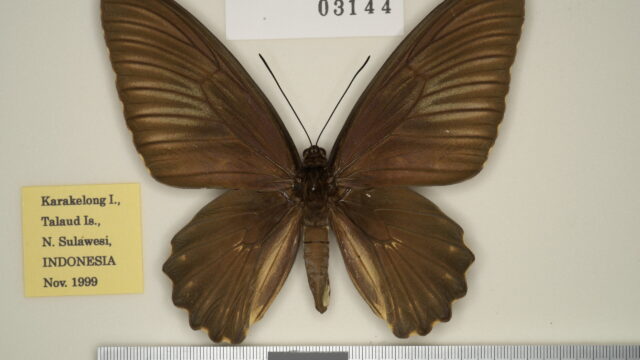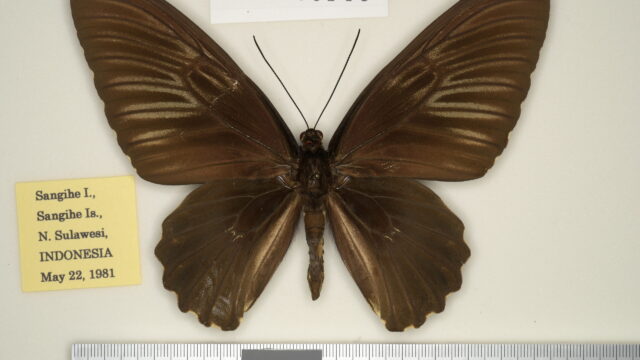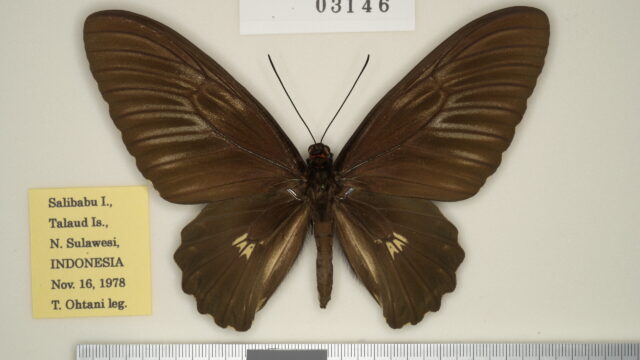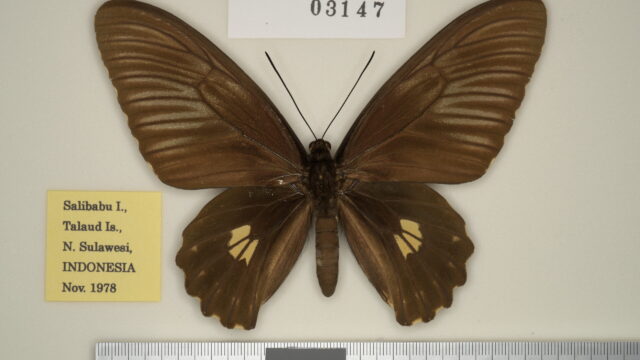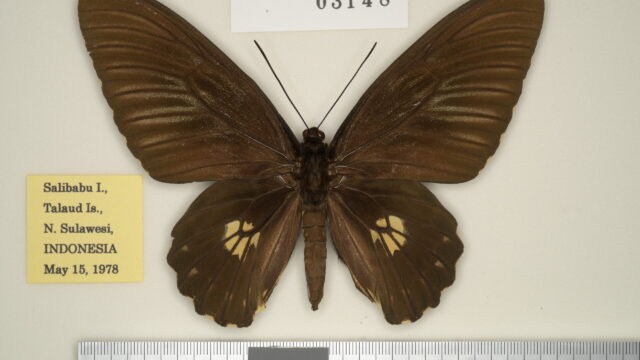17) Sp. dohertyi (Rippon, 1893)3) [♂, ♀]
=vordermani (Snellen, 1895)5) [♂, ♀] (Talaud Is.)
(Distribution) [DCD 36], [Map 150]
INDONESIA [N. Sulawesi] Talaud Islands (Karakelong Is., Salibabu Is., Kaburuang Is., Sangihe Islands (Sangihe I.).
(Vertical distribution)
Unknown (Lowlands).
(Episodes of discovery and original description)
The first specimens were collected by Doherty (to whom the species name is dedicated) in the Talaud Islands in February and March 1892, and were acquired by Rippon through the courtesy of Elwes, who described them as a new species the following year in 1893. In his preface, he described this species as being of great phylogenetic interest because it is considered to be a transitional form.
(Characteristics)
This is an endemic species to the Talaud-Sangihe Islands. It is the only known Troides without golden spots. This species is a close relative of Troides rhadamantus and was once treated as a its subspecies.
(Spotted pattern)
♂: Wing apex of FW and HW pointed, resembles those of approximate species. FW is glossy black, and vein-stripes from V2nd to V9th are visible through them. HW is also black, glossy, and unmarked. On the underside, V2nd – V9th of FW have gray vein-stripes, while HW has unmarked or yellow discal spots that gradually decrease in size from space 2 to the subcostal space submarginally, but the size and number of those spots vary among individuals. Red hair tufts are present on the neck and lateral thorax. The upper surface of abdomen is black, and under surface is yellowish white.
♀: The apex and tonus of FW are rounded, and the outer margin of HW is wavy and uneven. FW is dark brown with indistinct grayish vein-stripes at the cell-apex and on V2nd – V9th, of which the cell-apex is M-shaped and the vein-stripe along V2nd do not reach the cell. HW is darker than FW, and there is a great deal of individual variation, from very small dirty yellowish-white spots around the cell to no spot. Abdomen blackish brown on upper side, striped ochre and black on underside.
(Variation)
♂-f. fasciculatus Lathy, 18991): [Aberrant FW pattern] The grayish white vein-stripes on the underside of FW are widespread and fused together to form a wide fascia.
♀-f. fasciculatus Lathy, 18991): [Aberrant FW pattern] All over the FW are covered with brownish gray except for basal 1/3 of wing.
♀-f. dohertyi (Rippon, 1893)3): [Aberrant HW pattern] HW pale band is present. (Normal form)
♀-f. vordermani (Snellen, 1895)5) (=futura Rumbucher & von Knötgen, 19994)): [Aber-rant HW pattern] HW pale-band is absent.
(Larval foodplant)
Aristolochia tagala, Aristolochia gaudichaudii.2)
